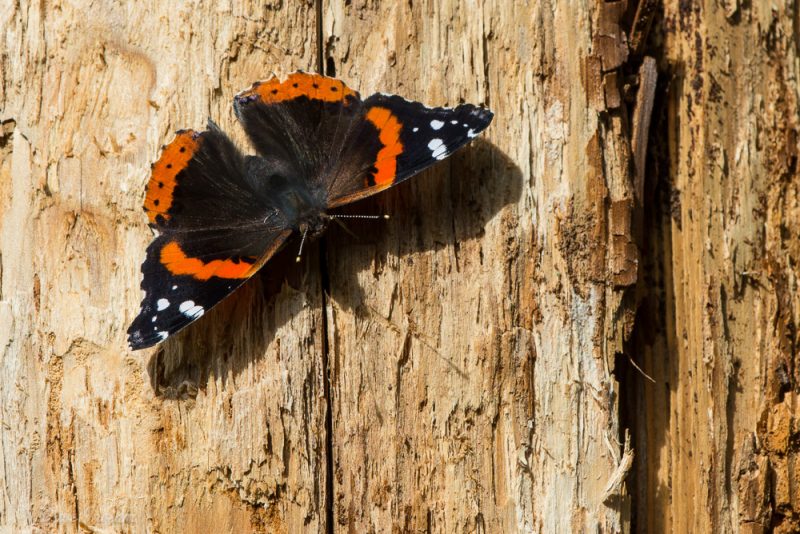Our 11 year old neighbour who lives across the back alley from our house in Courtenay is always calling us over to check out insects or plants that he’s found—this week J. came over to tell us that there was a Red Admiral (Vanessa atalanta) in his backyard. Typically, Lorquin’s Admirals (Limentis lorquini ssp. ilgae) are much more readily seen on Vancouver Island, so we were excited to see this uncommon butterfly visitor.

According to Efauna BC, “Red Admirals occur occasionally as migrants in central and northern BC except in the extreme northwest, and regularly as migrants in southern BC. They breed across southern and central BC in moist open or partially wooded areas, and in scattered localities further north” so seeing one on Vancouver Island is not outside of the expected range of this species at this time of year. Typically, Red Admirals breed in the southern and central parts of the British Columbia.
The Red Admiral is distinctive in colouration and can be easily separated from the more common Lorquin’s Admiral (shown below).

The key difference is in colour and wing pattern. In both species, the wings are dark brown and have a bold wing bar that stands out when the butterfly is resting. In the case of the Lorquin’s, the bar consists of white spots in a line through the middle of each wing, the Red Admiral has a more continuous reddish/orange wing bar that passes through the middle of the forewing and then follows the outside margin of the hindwing. Note also the orange tips of the forewings of the Lorquin’s Admiral, compared with the black spotted tips of the Red Admiral.
The Red Admiral relies on stinging nettle (Urtica dioica) as a larval food plant. Adults will also sometimes feed on the juice of plums and other fruit that have fallen to the ground and split open. Encouraging stinging nettle as a garden plant might support this butterfly at the limits of its range.
It is always well worth keeping an eye out in our own backyards and gardens over the course of the year—one never knows when something unusual might turn up!